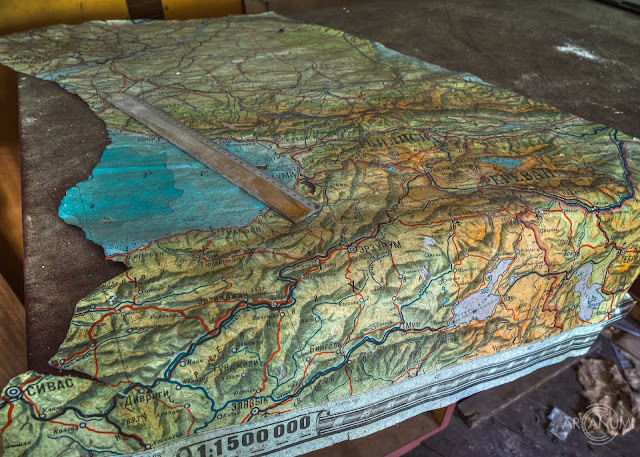Little did we know that we were going to come across that black van again during our second visit...but one thing at a time.
We met up with our friends Katto and Marco late in the morning. The parking place that we had used the first time was occupied, so we had to look for another one, and we did find one a little farther away, which was okay, because we didn't want to arise an suspicion.
We had first planned to use the access that we had found the first time, but unfortunately that ladder that allowed uns to climb over the wall was gone. So we had to find another way in. Around the side of the premises we found a construction fence through which we could easily enter the site.
From there, we made our way through the huge halls of the once flourishing carpet factory. The architecture had lost none of its appeal for me the second time around, so I really enjoyed this exploration. What's more, we found some areas that had eluded us on our first visit, but which we were able to see at our leisure this time, such as the administration building and the water treatment plant.
As we were examining the latter, the black van suddenly drove up, a door opened and a dog jumped out and ran into the building barking.
Regardless of the situation, it was a funny sight: We had hidden to the side of the hallway to avoid being spotted immediately, and the dog didn't manage to stop due to extremely slippery tiles on the floor. So he then slid on all fours down the corridor into the next room, struggling to stop as he saw us standing right there. It wasn't an aggressive dog, he was just sent in by his owner to scare us.
Of course, we went out, because obviously we had been seen, and we have made it our policy to never run away, but to approach people and be friendly.
The driver of the van was friendly as well. He asked us if we were just taking photos, which we confirmed. He was fine with that and allowed us to go on. He also asked us how we got on the premises and asked us to please close the access when we left.
This situation shows once again that if you are friendly and don't make extra work for people by running away, you usually don't have a negative experience, but on the contrary often even get permission to continue with your exploration.
So we continued our exploration for another hour or so, before we left the place on the same way he had entered it - and of course, we closed the conctruction fence after we left.
To find out a bit more about the history of the place and to check out all the photos, click the button below.
























